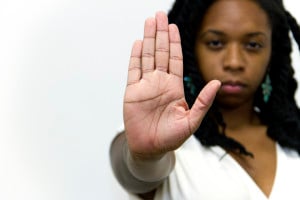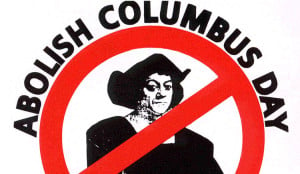
Source: The Brooklyn Ink
I was walking across campus, on my way to class, when a white man stopped me and asked, “Are you from Bahrain?”
“I’m sorry?” I asked, confused by his question.
“Bahrain? I have a friend who is studying here from there, and you look so similar to her.”
I have a lot of opinions about when and how it is appropriate to ask someone about their race, mostly formed by my early experiences watching my Pakistani father struggle to respond to questions just like that one. But that’s not what first entered my mind this time.
What first entered my mind was, “Oh, he doesn’t think I’m white.”
If I’m not being read as white, people describe me as “racially ambiguous.” Sometimes, my race is ignored completely. Other times, folks make assumptions about my origins, ranging from every continent of the world.
I never understood how or why people developed such diversely varied opinions about my race. Was it my name that gave it away? my skin tone? Did they mistake my Midwest accent for something more “exotic?”
The invalidation of my racial identity from others was confusing growing up. It was a constant reminder that I just didn’t quite fit in.
My experiences growing up with a Pakistani father did not match those of my White friends, but it was also clear that, as someone who was biracial, I didn’t fit in to any other category.
Due to these mixed messages, my understanding of my own race has shifted, changed, and developed over the past 25 years.
Most people are not okay with the ambiguity; they either want to categorize me as “White” or “Other.” They want to tell me what I can and can’t identify as.
In a society that invalidates multiracial identities, reclaiming your identity is both an act of preservation and a political act.
So as you wade through this reclamation, here are four things to remember.
1. You have the right to identify yourself separately from how others identify you.
I have struggled with my racial identity since I was a child.
My father immigrated to the United States when he was 19 and was fairly acculturated when he had my sister and me 20 years later.
My white mother, born and raised in the United States, was in and out of our lives; it was my father who raised us — a pretty unconventional choice in the culture in which he was raised.
My father often underplayed his own and our ethnicity.
He cooked steaks and potatoes as often as he cooked aloo palak. Our traditional Pakistani clothes collected dust in the closet until we would visit our relatives in Chicago. He was slightly annoyed when I asked to fast for Eid in elementary school and refused to teach my sister or me Urdu.
And for the most part, that was fine with me.
I was born and raised in the Midwest, and I didn’t identify with the lives that my relatives lived. I was not religious, did not know the language, and knew little of the history of the place in which my father grew up. It was as foreign to me as it was to everyone else around me.
For my White friends, my Pakistani identity seemed both salient and irrelevant. They were aware of its novelty, but not aware of how that part of my identity might impact my life.
On the other hand, my dad’s relatives and family friends were very well aware of my Whiteness and frequently pointed out the ways in which my sister and I were not conforming to the norms of Pakistani culture.
People constantly made assumptions about my dad’s race everywhere we went – at the bus stop, in the grocery store, and at work. My identity could often go unmentioned.
How I understood my identity was secondary; I would only be questioned when others were trying to make sense of it in any given situation.
People wanted to categorize me, and once they decided what I was, the conversation was over. The nuances of what it meant to grow up biracial in America, the daughter of a first-generation immigrant, were irrelevant.
Throughout my life, relatives, friends, classmates, and strangers have all tried to tell me how to identify. Sometimes their perceptions of me matched my own; other times, it didn’t.
Recently, I had someone tell me that I couldn’t really identify as Pakistani because I had a White mother. “It’s different for you,” they said. And they were right. It is different for me. But they don’t get to determine how I understand my race.
My identity doesn’t hinge on how others see me. My race is mine to determine.
2. You do not have to choose one race over another, and your identity can shift and change throughout your lifespan.
As a child, I loved to dress up in my Pakistani outfits.
I’d wear them around the house even though my father was always scolding me for getting them dirty. I would wear my bangles to dinner and then recreate the Biblical Nativity scene with Barbie dolls and stuffed animals.
We would hide the pepperoni in the refrigerator when our relatives came over, and I would mysteriously disappear around the time for prayer.
People around me may have been perplexed by my multiracial identity, but none of it seemed abnormal to me.
It was my life, and I was neither confused nor torn about it. When asked, I would simply explain that my dad was from Pakistan and my mom was from the United States; more often than not, that was sufficient.
In college, I began to learn more about privilege, power, and identity.
It was during this time that I began to think more about my racial identity. It was clear to me that my experiences did not match those who identified solely as White or those who identified solely as South Asian.
The question of “What are you?” became not only offensive, but confusing as well.
Somehow, prattling off my parents’ identities no longer seemed sufficient.
It is not until recently that I have become more comfortable identifying as biracial. I am still sorting through feelings of invalidation – that my cultural experiences are not enough to even identify a part of myself as Pakistani.
It was also not until recently that I realized that it was okay for me to not be sure. It is fine that I identified differently as a child than I do now, and it is fine if I identify differently later in life. Just like other people’s racial identities, multiracial identity is fluid and subject to change.
There are various ways in which someone who is multiracial can negotiate their identity:
- You can accept the identity that society defines for you.
- You can identify with all of the racial groups that you associate yourself with.
- You can choose one single racial group with which you identify.
- You can identify as an entirely new racial group.
Not only are there different ways to identify, but these different ways of identifying yourself may also shift and change over time. You don’t have to have it all figured out right now.
3. Accepting your privilege does not mean denying your experiences.
I grew up in small cities in Illinois and Indiana; of course I dealt with and witnessed microaggressions towards both my father and me.
For the most part, however, people found my racial identity a novelty – not interesting enough to fetishize and similar enough to forget.
As I learned more about power and privilege, I became more aware of the privileges that I received due to my mixed race. I am light. I do, more often than not, pass for white. That comes with privileges when maneuvering in a society that values whiteness.
So I accepted the whiteness in me without acknowledging the other piece of me, the other piece that colored much of my early childhood and continues to impact my life.
There is a story my father tells of my early understanding of race. Every day, he would hold my hand and walk me to my classroom in kindergarten. I was attending a private Lutheran school at the time because they did not have the same age cutoffs as public schools. One day, I asked him not to come in with me.
“You look different, Dad,” I said.
I was four.
At that young age, I understood my father’s difference from the other parents in the school. I also understood my own difference, both from my father and from my peers. It was confusing, and neither of us had the language to put those experiences into words.
Just because I receive privilege due to my skin color does not mean that I do not receive invalidation and discrimination due to my heritage.
I never know if people are genuinely asking me where I am from or hinting at my racial makeup. I’ve had boyfriends fetishize my race and others completely ignore it. I’ve had people refuse to pronounce my name correctly and insist on giving me nicknames. I’ve been held up in airports and taken into backrooms for further screenings.
I’ve been told that I can’t identify as Pakistani, and I’ve been told that I can’t identify as white.
These microaggressions have come from strangers and people in my own family.
My denial of these experiences is no more helpful than the denial of my whiteness. My racial identity is complicated, and so is my privilege.
4. You have the right to be treated with respect and without discrimination.
Defining one’s race is always a political act in a society that insists on defining it for you.
As you navigate the complexities of your racial identities, be assured that you are afforded the same considerations as those around you.
Maria Root published the “Bill of Right for People of Mixed Heritage.” In this document, she lists the rights (among others):
- Not to justify my existence in this world.
- Not to keep the races separate within me.
- Not to justify my ethnic legitimacy.
- Not to be responsible for people’s discomfort with my physical or ethnic ambiguity.
I would add that I have the right to define my experiences, resist microaggressions, identify sources of privilege and discrimination, and claim the complexities of my identities.
Sharon H. Chang writes in her essay, “Why Mixed with White isn’t White”:
“When I tell my son that he is Asian, mixed-race, multiracial, and a person of color, I’m not denying him parts of his ancestral-ethnic heritage. I’m teaching him about the race politics that intrude upon our lives whether we want them to or not. I’m preparing him to exist in a world that obstinately persists in being racially divided. And I’m trying to let him know something about the ways he has and will continue to be judged throughout his life, not because he’s white — but because he’s mixed with color.”
Reclamation of my identity means acknowledging that I am not either Asian or White; I am both Asian and White, and with that comes all the complexities and nuances of multiracial identity.
Reclamation means knowing that my experiences are valid enough, regardless of how a passerby identifies me.
It doesn’t mean that I never feel confused, unsure, or isolated. But my reclamation grounds me. It means that I can shift, change, and alter, but always come back into my own skin, my own identity, my own self.
[do_widget id=”text-101″]
Aliya Khan is a Contributing Writer for Everyday Feminism and identifies as a feminist, activist, and life-long learner. She provided crisis support to survivors of abuse at the Women’s Center and Shelter of Greater Pittsburgh and is currently living, studying, and writing in the Pacific Northwest.
Search our 3000+ articles!
Read our articles about:
Our online racial justice training
Used by hundreds of universities, non-profits, and businesses.
Click to learn more
Most Read Articles
- « Previous
- 1
- …
- 30
- 31
- 32




















